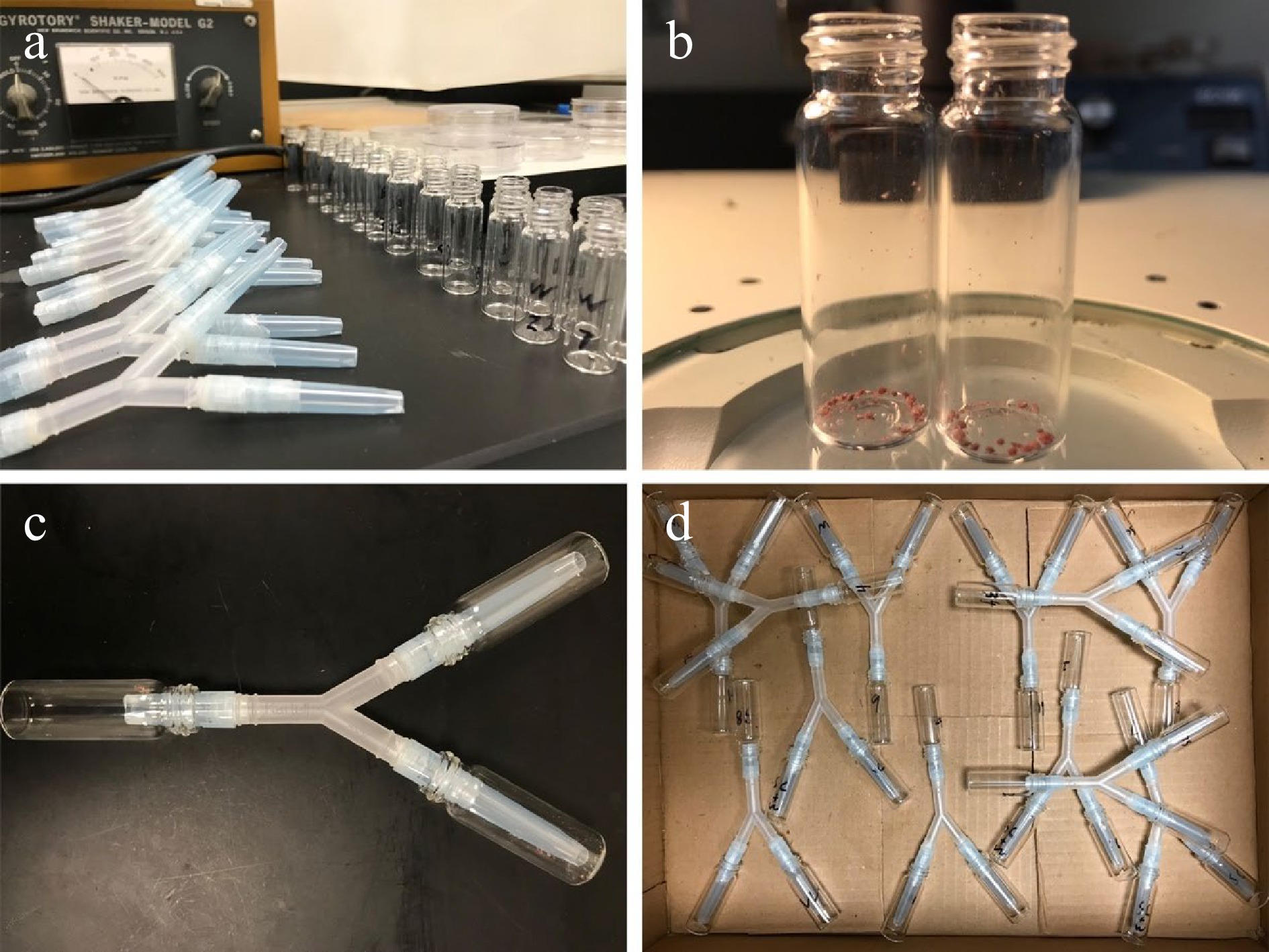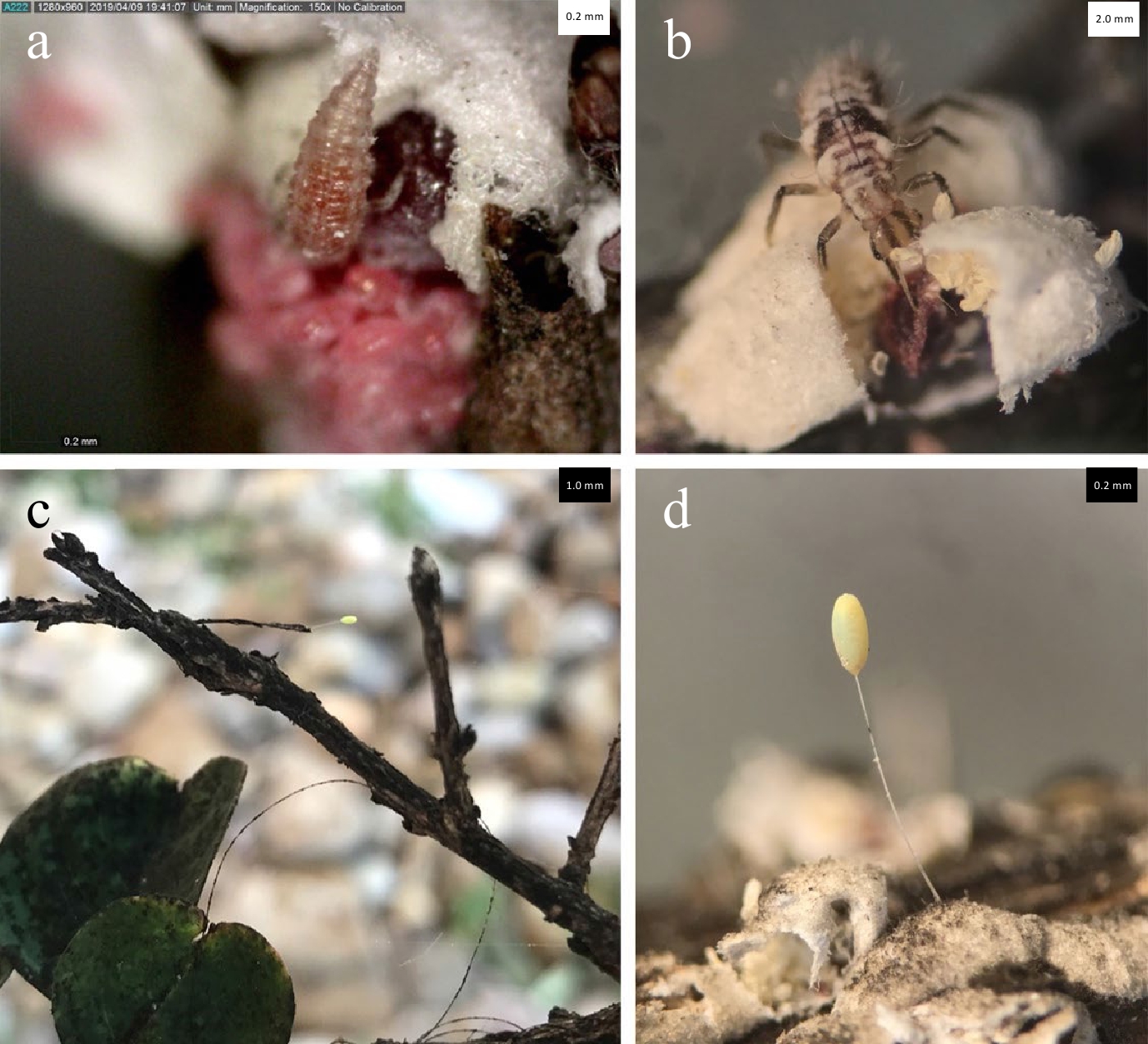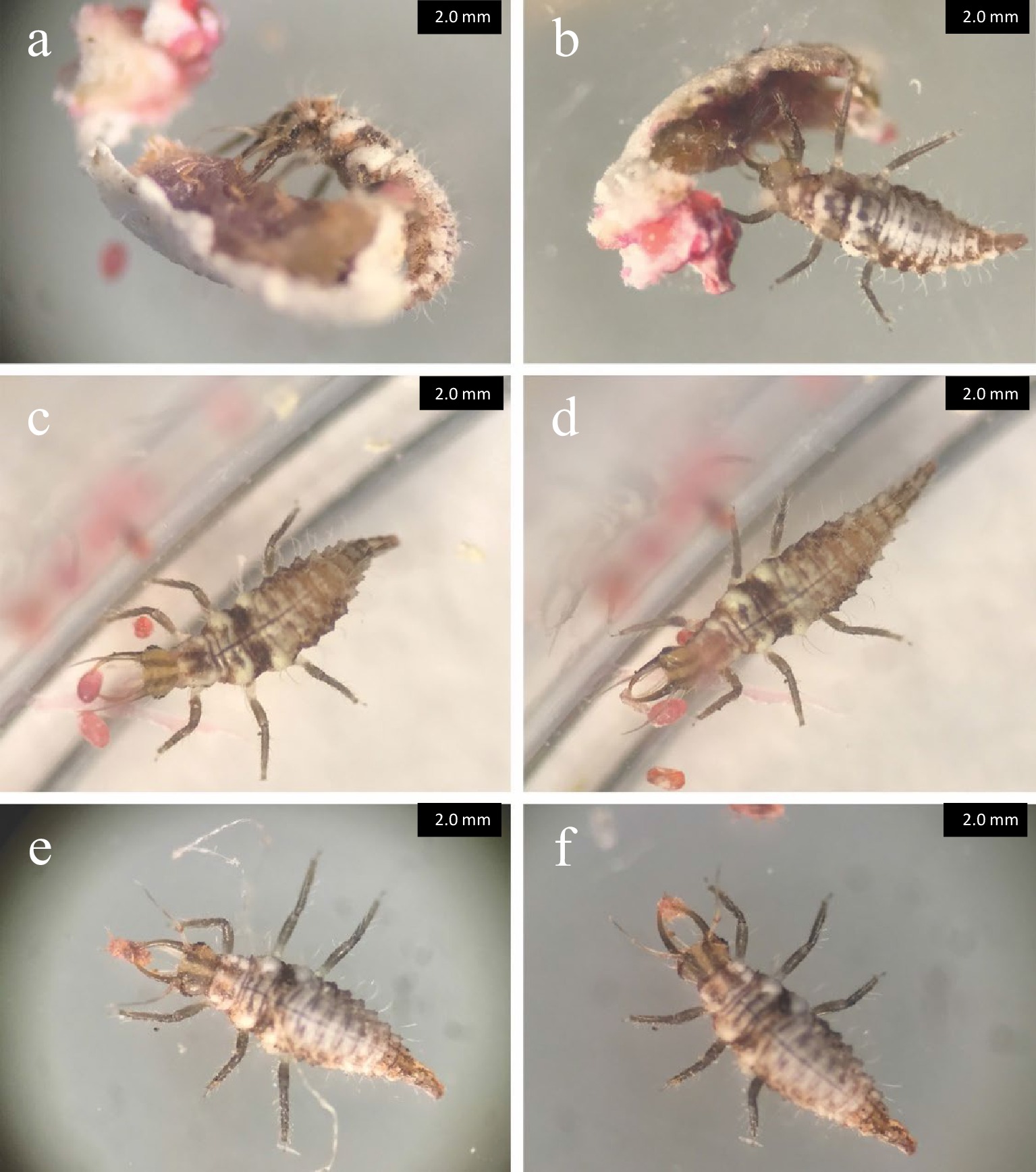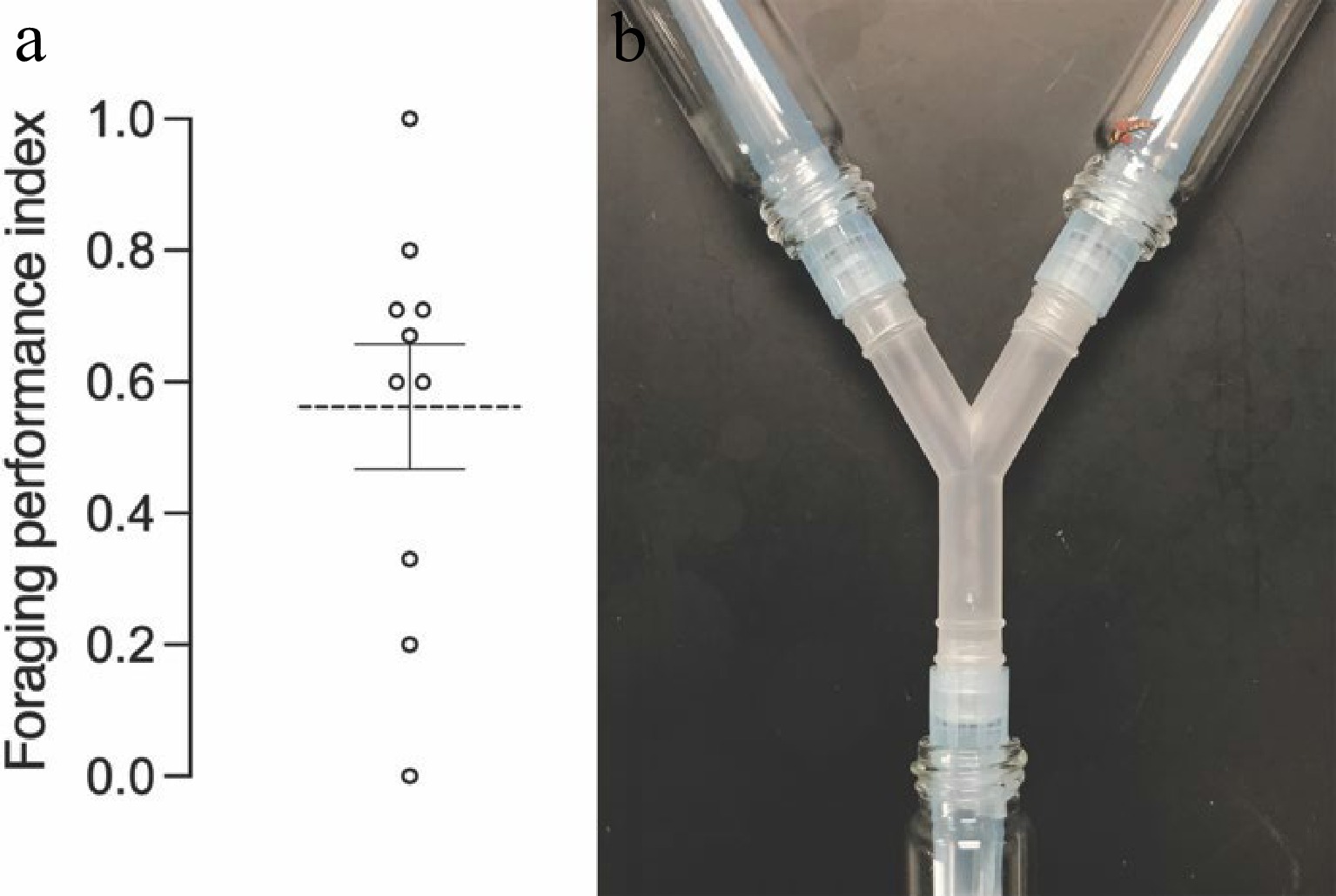-

Figure 1.
Y-maze assay. (a) Each Y-tube setup was assembled by a Y-tubing connector and contained a loading vial, a baited vial, and a control vial. (b) Before being fixed to the Y-tubing connector, CMBS females and crawlers were placed into the baited vial. (c) Three 1-mL pipette tips wrapped with Parafilm were used to tightly fix the connector to the three vials. Narrow ends of the two pipette tips were cut to connect the baited vial and the control vial, which could deter the lacewing crawling back once it had made its decision[49]. The wide end of the other pipette tip was cut to connect the loading vial where a larval lacewing was introduced. (d) Twelve Y-mazes were placed horizontally in a box and tested per time and replicated 10 times at 25 ± 1 °C, 60 ± 5% RH in the dark.
-

Figure 2.
Observations of Chrysoperla rufilabris were reported at different locations on Texas A&M campus (USA). Larval C. rufilabris were observed preying on CMBS gravid females during the landscape investigations on April 9th (a) (30°36'39" N, 96°20'58" W) and June 28th (b) (30°36'55" N, 96°20'24" W). Lacewing eggs were found in CMBS-infested crapemyrtles on Oct 18th (c) (30°37'03" N, 96°20'08" W) and Nov 15th, 2019 (d) (30°36'30" N, 96°21'02" W).
-

Figure 3.
Larval Chrysoperla rufilabris individuals preying on CMBS under laboratory conditions. Larva of C. rufilabris targeted a female adult of CMBS (a) and voraciously seized and consumed body fluids of the CMBS using its large, sucking jaws (b) after placing them in the same Petri dish. A green lacewing larva easily grabbed a CMBS egg (c) and consumed the egg in about 1 min (d) after placing them in the same Petri dish. Larva seizing a crawling nymphal CMBS (e) and consumed it quickly (f) under the same experimental conditions.
-

Figure 4.
Foraging performance test in 24-h Y-mazes. (a) The foraging performance index (FPI) of C. rufilabris in the 24-h Y-maze assay was 0.56 ± 0.09 (mean ± SE). (b) Among the lacewings that made a choice, 78.14 ± 4.74% larval C. rufilabris successfully targeted CMBS in the dark.
-
Predator developmental stage Feeding duration
(sec)zNumber of
consumed CMBSz1st instar 141.4 ± 4.8a 11.8 ± 1.3c 2nd instar 77.5 ± 4.7b 151.5 ± 6.6b 3rd instar 60.3 ± 3.0c 176.4 ± 6.9a Statistical analysis F 2,177 = 101.1332,
p < 0.0001F 2,177 = 252.6378,
p < 0.0001z Means ± SE (N = 3, representing a total of 60 tested for each developmental stage), in the same column, followed by different letters are significantly different as determined by Tukey's HSD test (α = 0.05). Table 1.
Feeding duration and numbers of CMBS eggs consumed by Chrysoperla rufilabris at different developmental stages.
Figures
(4)
Tables
(1)